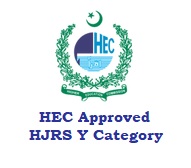Bridge maintenance parameters: a case study of railway bridges in Pakistan
DOI:
https://doi.org/10.47264/idea.nasij/4.2.1Keywords:
Pakistan railway, bridge maintenance, bridge inspection, railways management, bridge safety, infrastructure management, maintenance standardsAbstract
Ensuring railway bridges' safe and efficient operation is fundamental to infrastructure management. This study comprehensively analyses critical parameters in bridge maintenance, encompassing maintenance standards, regular inspections, funding, training, and technology adoption. Leveraging a Google survey administered to Pakistani railway bridge engineers and inspectors, the research provides insights into the existing maintenance landscape and avenues for enhancement. SPSS analysis was employed to scrutinise the survey data. Timely repairs, utilisation of high-quality materials, and the proactive replacement of damaged components emerge as pivotal factors underpinning effective bridge maintenance. However, the perceived suboptimal standard of maintenance for Pakistan Railways (PR) bridges necessitates substantial improvements. While current maintenance procedures exhibit moderate effectiveness, they warrant refinement. Overcoming the challenges of insufficient funding and inadequate training is paramount in bridge maintenance. Furthermore, harnessing technological advancements offers promise but demands specialised training and considerable investments. This study highlights the crucial significance of regular inspections, emphasising the urgency of increasing inspection frequencies in Pakistan. These findings are a foundation for developing more efficient and effective bridge maintenance programs, safeguarding the longevity and safety of railway bridges within the broader transportation framework.
References
AASHTO. (2019). Manual for bridge element inspection (2nd Edition). American Association of State Highway and Transportation Officials, Washington, DC.
AASHTO. (2011). The manual for bridge evaluation. American Association of State Highway and Transportation Officials (AASHTO), Washington, DC.
AASHTO. (1970). A guide for highway landscape and environmental design. American Association of State Highway and Transportation Official, Washington, DC.
Andersson, L. (2022). Continuous preventive bridge maintenance: effect of high pressure washing on concrete bridges. Doctoral Dissertation, Kungliga Tekniska Högskolan.
Bettis, G. A. (2022). Bridge inspection manual. Texas Department of Transportation. http://onlinemanuals.txdot.gov/txdotmanuals/ins/ins.pdf
BIEM. (2018). Bridge inspection and evaluation manual. Ministry of Road Transport and Bridges, Road and Highway Department, Bangladesh. https://www.rhd.gov.bd/Documents/Bridge_Management_Manuals_BMCDP/Inspection_and_Evauation_Manual_2018.pdf
Bien, J., Elfgren, L., & Olofsson, J. (2007). Sustainable bridges: assessment for future traffic demands and longer lives. Dolno?l?skie Wydawnictwo Edukacyjne Wroc?aw. https://www.diva-portal.org/smash/record.jsf?pid=diva2%3A994668&dswid=9079
BIM. (2018). Bridge inspection manual. Ministry of Public Works and Transport, General Directorate of Techniques Road Infrastructure Department, Bangladesh. https://www.rhd.gov.bd/Documents/Bridge_Management_Manuals_BMCDP/Inspection_and_Evauation_Manual_2018.pdf
Costa, B. J. A., & Figueiras, J. A. (2012). Evaluation of a strain monitoring system for existing steel railway bridges. Journal of Constructional Steel Research, 72, 179-191. https://doi.org/10.1016/j.jcsr.2011.12.006
Chan, B., & Guan, H. (2016). Defining a conceptual framework for the integration of modelling and advanced imaging for improving the reliability and efficiency of bridge assessments. Journal of Civil Structural Health Monitoring, 6, 703–714. https://doi.org/10.1007/s13349-016-0191-6
FHWA. (1995). Recording and coding guide for the structure inventory and appraisal of the nation’s bridges. Rep. No. FHWA-PD-96-001, US Department of Transportation. https://www.fhwa.dot.gov/bridge/mtguide.pdf
Hearn, G. (2007). Bridge inspection practices. Transportation Research Board, Washington, D.C. https://doi.org/10.13140/RG.2.1.5179.5604
Indian Railway. (1998). Indian Railway bridge manual. Ministry of Railway, Government of India.
Krishna, A., & Sengupta, P. (2017). Recent Research Advance on Railway Bridges. International Journal of Advances in Mechanical and Civil Engineering, 4(4), 2394-2827. https://www.iraj.in/journal/journal_file/journal_pdf/13-395-156707767196-99.pdf
Lee, S., Kalos, N., & Shin, D. H. (2014). Non-destructive testing methods in the US for bridge inspection and maintenance. KSCE Journal of Civil Engineering, 18, 1322-1331. https://link.springer.com/article/10.1007/s12205-014-0633-9
Manual, P. B. (1992). Bridge manual. Maktaba Jadeed Press (PVT) Ltd.
Manual, P. W. (1969). Way and works manual.
Pakistan Railways. (2020-21). Yearbook Ministry of Railways Government of Pakistan. https://www.pakrail.gov.pk/YearBook.aspx
Public Works and Government Services Canada. (2010). Bridge inspection manual. https://buyandsell.gc.ca/cds/public/2021/05/28/1afa8d386ff1a2224333e8f59ea33331/appendix_h_-_pwgsc_-_bridge_inspection_manual_2010.pdf
Swenson, D. V. (1991). The collapse of the Schoharie Creek Bridge: a case study in concrete fracture mechanics. International Journal of Fracture, 51, 73-92. https://doi.org/10.1007/BF00020854/METRICS
Xi, R., He, Q., & Meng, X. (2021). Bridge monitoring using multi-GNSS observations with high cutoff elevations: A case study. Measurement, 168, 108303. https://doi.org/10.1016/J.MEASUREMENT.2020.108303
Wong, K.-Y. (2004). Instrumentation and health monitoring of cable-supported bridges. Structural Control and Health Monitoring, 11(2), 91-124. https://doi.org/10.1002/stc.33
Yu, S. M. S., & Ou, J. (2017). Structural health monitoring and model updating of Aizhai suspension bridge. Journal of Aerospace Engineering, 30(2), B4016009. https://doi.org/10.1061/(ASCE)AS.1943-5525.0000653
Zia, A., Zhang, P., & Holly, I. (2023a). Experimental investigation of raw steel fibres derived from waste tires for sustainable concrete. Construction and Building Materials, 368, 130410. https://doi.org/10.1016/j.conbuildmat.2023.130410
Zia, A., Zhang, P., & Holly, I. (2023b). Effectiveness of hybrid discarded tire/industrial steel fibres for improving the sustainability of concrete structures. Construction and Building Materials, 378, 131226. https://doi.org/10.1016/j.conbuildmat.2023.131226
Downloads
Published
Issue
Section
License
Copyright (c) 2023 Muhammad Ghiyas uddin, Muhammad Ali, Atif Ali, Ashir Zubair

This work is licensed under a Creative Commons Attribution-NonCommercial 4.0 International License.
Please click here for details about the Licensing and Copyright policies of NASIJ.








